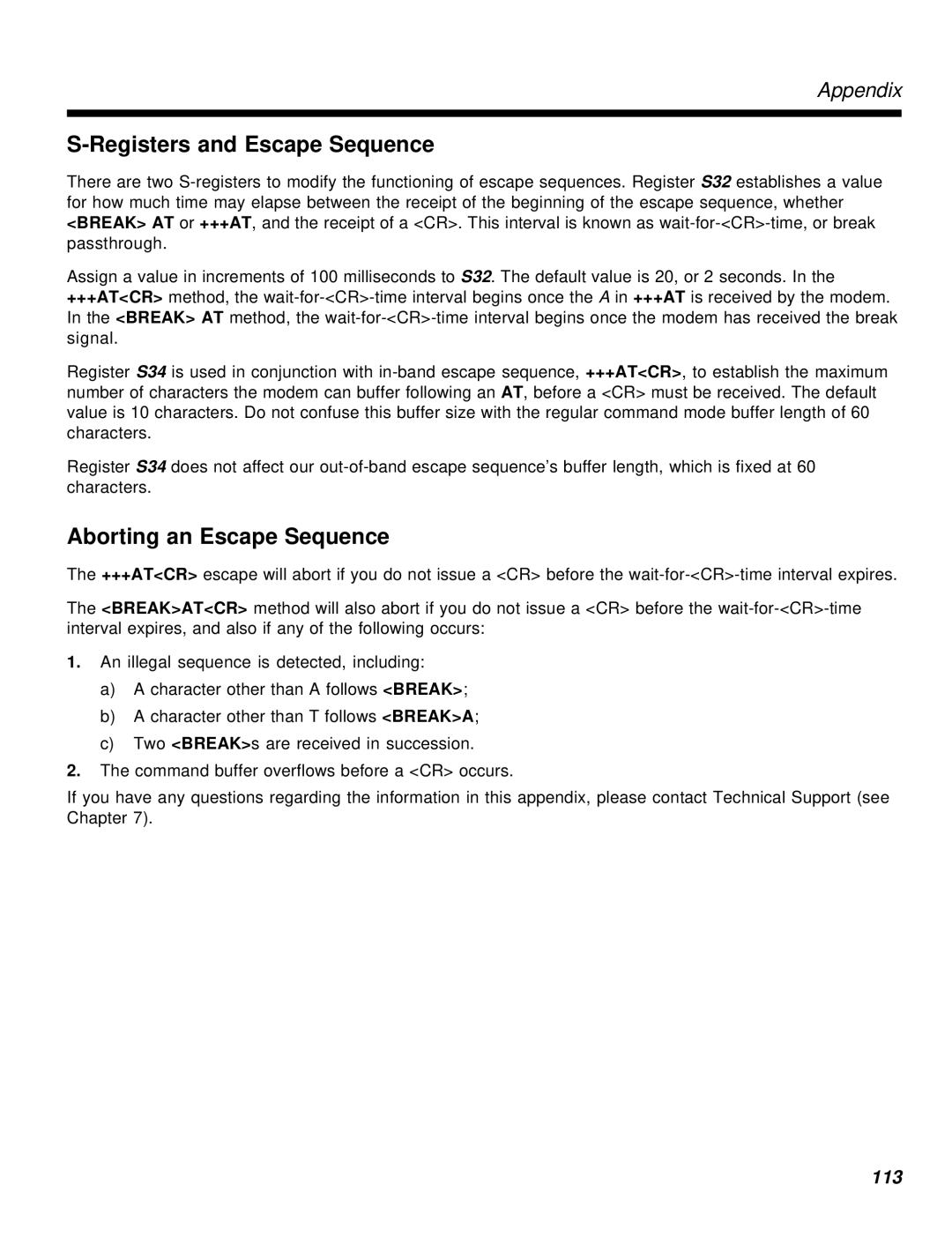Appendix
S-Registers and Escape Sequence
There are two S-registers to modify the functioning of escape sequences. Register S32 establishes a value for how much time may elapse between the receipt of the beginning of the escape sequence, whether <BREAK> AT or +++AT, and the receipt of a <CR>. This interval is known as wait-for-<CR>-time, or break passthrough.
Assign a value in increments of 100 milliseconds to S32. The default value is 20, or 2 seconds. In the
+++AT<CR> method, the wait-for-<CR>-time interval begins once the A in +++AT is received by the modem. In the <BREAK> AT method, the wait-for-<CR>-time interval begins once the modem has received the break signal.
Register S34 is used in conjunction with in-band escape sequence, +++AT<CR>, to establish the maximum number of characters the modem can buffer following an AT, before a <CR> must be received. The default value is 10 characters. Do not confuse this buffer size with the regular command mode buffer length of 60 characters.
Register S34 does not affect our out-of-band escape sequence’s buffer length, which is fixed at 60 characters.
Aborting an Escape Sequence
The +++AT<CR> escape will abort if you do not issue a <CR> before the wait-for-<CR>-time interval expires.
The <BREAK>AT<CR> method will also abort if you do not issue a <CR> before the wait-for-<CR>-time interval expires, and also if any of the following occurs:
1.An illegal sequence is detected, including:
a)A character other than A follows <BREAK>;
b)A character other than T follows <BREAK>A;
c)Two <BREAK>s are received in succession.
2.The command buffer overflows before a <CR> occurs.
If you have any questions regarding the information in this appendix, please contact Technical Support (see Chapter 7).
